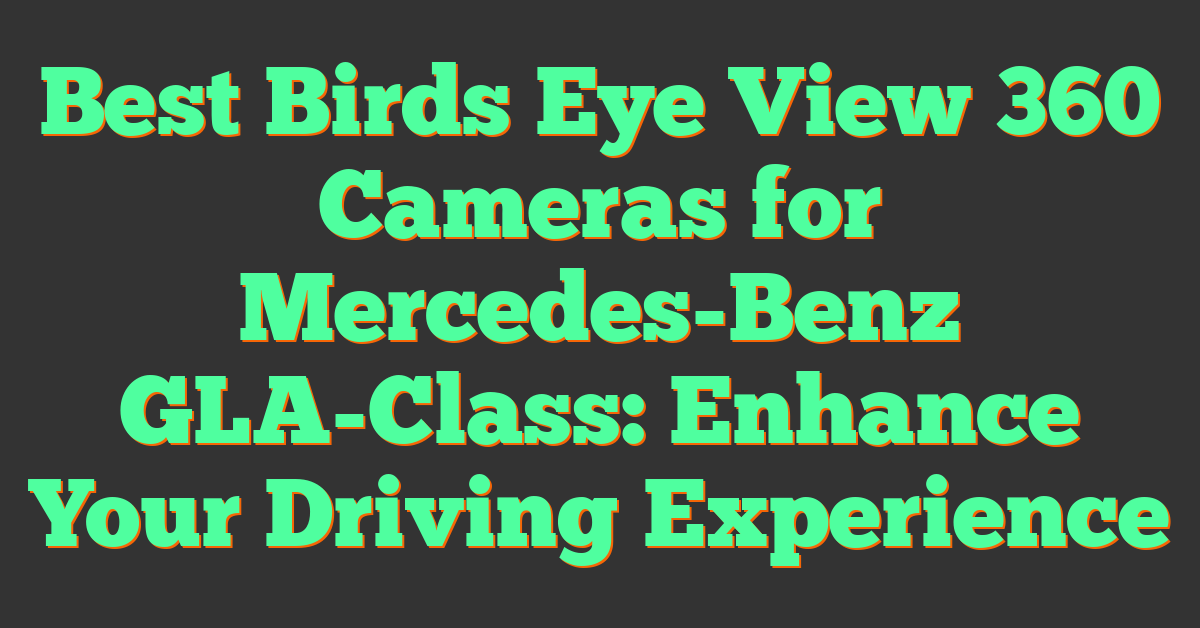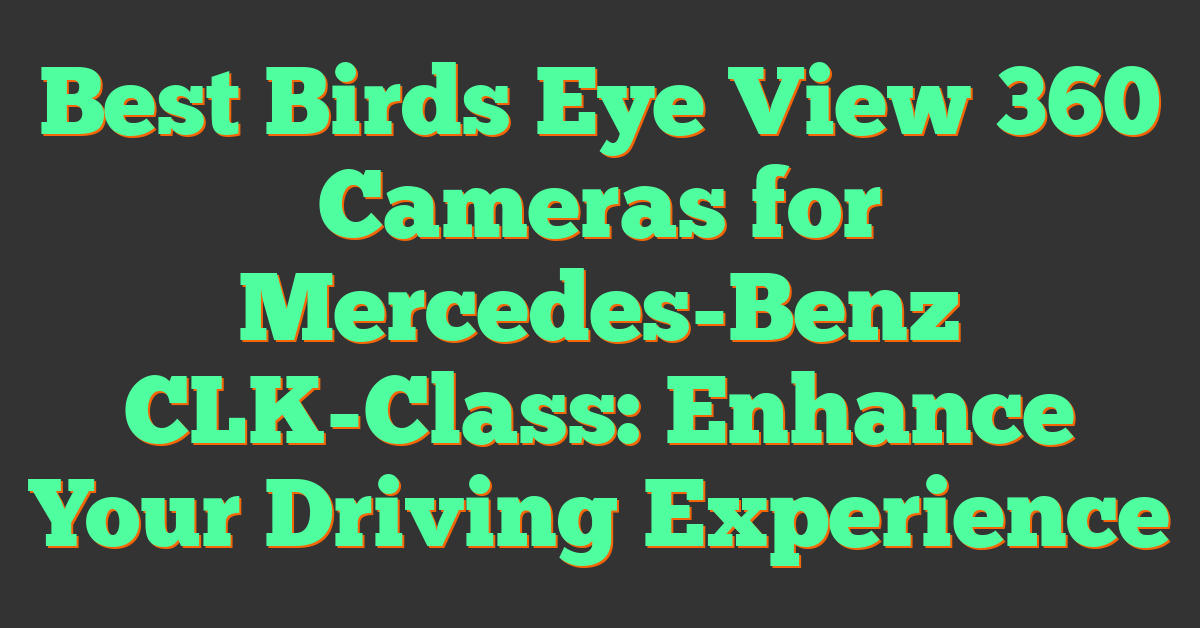Key Takeaways
- 360 cameras have transformed visual storytelling by providing immersive perspectives, breaking the limitations of traditional photography and videography.
- Technological advancements like real-time stitching, AI enhancements, and higher resolutions have made 360 cameras accessible to both professionals and hobbyists.
- Wide-ranging applications include real estate virtual tours, travel promotions, VR content creation, and immersive educational or training programs.
- Elevated audience engagement on social media and online platforms is driven by interactive features like 360-degree video exploration and reframing options.
- Challenges such as low-light performance, battery life, and file sizes are being addressed through innovations like larger sensors, modular designs, and advanced connectivity.
- Future growth opportunities lie in VR/AR integration, AI-powered creativity, and expanding practical uses across industries.
I’ve always been fascinated by how technology reshapes our perspective, and 360 cameras are a perfect example of this. These innovative devices have transformed the way we capture and experience the world, offering immersive views that traditional cameras simply can’t match. From breathtaking landscapes to action-packed adventures, 360 cameras let us step inside the moment like never before.
What excites me most is how they’ve redefined storytelling and communication. Whether it’s virtual tours, interactive videos, or creative social media content, 360 cameras have opened up endless possibilities. They’re not just tools; they’re a new lens through which we see and share our world.
The Evolution Of 360 Cameras
360 cameras have redefined visual storytelling by offering perspective-shifting technology. Their journey from basic panoramic shots to fully immersive imagery highlights incredible advancements in photography.
From Panoramic Photos To Full Immersion
Early photography focused on capturing static panoramic images by stitching together multiple frames. While this approach provided wider views, it lacked seamless integration. The first breakthrough came with 360-degree rigs combining several cameras to create immersive content. However, these setups were complex, expensive, and accessible only to professionals.
Modern 360 cameras removed these barriers by integrating multiple lenses into a single, compact device. With real-time stitching, they produce immersive photos and videos instantly. The leap in software, offering smoother corrections and smart stabilization, has also elevated production quality. Now, both creators and hobbyists shoot fully immersive content for social media or virtual reality platforms.
Key Milestones In 360 Camera Technology
Several key innovations have propelled 360 cameras into mainstream photography. In 2012, consumer-ready models like the Ricoh Theta made a significant impact by merging easy handling with affordable pricing. GoPro’s Fusion, launched in 2017, introduced higher resolutions and advanced stabilization, appealing to adventure videographers.
Another breakthrough came with real-time livestreaming capabilities. 2020 saw the rise of cameras like the Insta360 ONE R, blending modular builds with advanced features like motion tracking and AI-enhanced editing. Features such as waterproof designs and HDR support have further expanded creative possibilities, ensuring 360 cameras meet diverse needs.
Today’s devices combine portability, high resolution (up to 11K for some models), and smart integrations with apps, placing professional-quality tools in the hands of enthusiasts and professionals alike.
Transforming Photography And Videography
360 cameras have redefined how we approach visual storytelling. Their ability to provide immersive content has expanded creative boundaries for photographers and videographers alike.
Capturing Unique Perspectives
« The Cultural Impact of 360 Camera Adoption: How Immersive Tech Is Changing Storytelling Forever
Unlock the Full Potential of Photography: Top Benefits of 360 Cameras for Everyday Users »
360 cameras capture everything within a scene simultaneously. This eliminates the limitations of traditional framing and allows users to explore the surroundings interactively. For instance, I’ve captured landscapes where viewers could not only admire the horizon but also look up to the sky and down to the terrain, creating a fully immersive experience.
These cameras also enable reframing in post-production. I often use this to focus on specific details without worrying about missing shots while filming. Devices like the Insta360 X3 are great examples, offering high-resolution footage that retains quality during reframes. Photographers and videographers can experiment with endless possibilities, transforming a single shot into multiple creative outputs.
The Rise Of Virtual Reality Experiences
360 cameras have become a cornerstone in creating VR content. I’ve seen firsthand how these devices transport viewers into different environments, whether it’s a bustling city street, serene natural setting, or action-packed event. By pairing 360 footage with VR headsets, audiences are immersed in the scene, as if they’re physically present.
For VR-ready production, cameras like the GoPro Max simplify the workflow. Features like real-time stitching and stabilization ensure seamless transitions between frames, enhancing viewer engagement. I’ve personally used these tools for virtual tours, allowing clients to explore spaces interactively, which offers significant value for real estate, travel promotions, and event previews. Combined with platforms supporting 360-degree content, such as YouTube VR, distribution to a wide audience becomes accessible and impactful.
Impact On Social Media And Content Creation
360 cameras have transformed how we create and engage with content online. Their ability to capture immersive, interactive visuals has redefined storytelling and audience interaction across platforms.
Engaging Storytelling With 360-Degree Content
Creating content with 360 cameras allows us to tell stories in a way that places the viewer inside the scene. Instead of static frames, viewers experience a complete environment, making them feel an active part of the story. This format is especially impactful for travel, events, and behind-the-scenes footage, where details matter.
On platforms like YouTube and Facebook, I’ve uploaded 360-degree videos that let users physically move their devices or use a VR headset to explore the scene from all angles. These moments resonate because they invite participation rather than passive viewing. Devices like the GoPro Max or Insta360 ONE X2 simplify sharing by integrating one-click uploading and interactive playback formats.
Enhancing Audience Interaction
Interactive features of 360 content drive higher engagement on social media. When followers can swipe, drag, or tilt their devices to explore a scene, they invest more attention. When I shared interactive real-estate tours or virtual events on Instagram and TikTok, comments and shares outperformed standard video posts.
Livestreaming in 360, such as with the Insta360 Link or Kandao QooCam, elevates real-time interaction. Viewers can control their perspective throughout live sessions, making them active participants rather than observers. This functionality is widely used for concerts, sports, and online workshops, where immersion makes experiences more memorable.
Applications In Various Industries
360 cameras have opened the door to transformative applications across industries. Their ability to capture immersive, all-encompassing views makes them powerful tools for innovation and problem-solving.
Real Estate And Architecture
360 cameras revolutionize real estate and architectural visualization. Instead of static images, I use these cameras to create virtual tours that let clients explore properties as if they’re physically there. Buyers can inspect every room, corner, and detail without stepping foot inside the property. This approach increases engagement and saves time for agents and potential buyers.
In architecture, 360 imagery enhances project presentations by showcasing designs in their entirety. It’s useful for collaborating with clients or teams by providing immersive walkthroughs of 3D models or construction progress. During my time with a manufacturer, I worked with architects who valued how tools like the Matterport Pro2 3D camera streamline capturing and sharing project visuals.
Travel And Tourism
Travel and tourism thrive on experiences, and 360 cameras bring those experiences to viewers’ screens. I’ve filmed panoramic videos of iconic locations, creating content that transports audiences directly into the heart of destinations. Tour operators now use 360 videos and VR-compatible footage to inspire travel bookings by giving customers a deeper connection to places they’ve never visited.
Destinations adopt immersive 360 experiences to promote attractions, highlighting landscapes, cultural landmarks, and experiences in an interactive format. Tools like the Insta360 ONE RS enable travel creators like me to document journeys with ease, producing compelling footage that resonates with viewers.
Education And Training
Education and training benefit significantly from 360-degree technology. Immersive learning experiences improve comprehension by recreating real-life scenarios for students or trainees. I’ve produced 360 educational content that delivers virtual field trips, allowing students to explore museums, historical sites, and natural wonders from their classrooms.
Training programs in industries like healthcare and aviation use 360 cameras for practice simulations, reducing risks associated with live training. For instance, medical professionals prepare for surgeries using VR setups created from 360 video footage. Cameras like the Kandao Obsidian simplify capturing detailed, high-resolution scenes required for these applications.
Challenges And Opportunities For The Future
Emerging technologies like 360 cameras offer immense potential, but they also face certain challenges that could shape their development. While technical constraints push innovation, creative possibilities continue to expand, giving professionals and enthusiasts new ways to tell their stories.
Technical Limitations And Innovations
Current 360 cameras still encounter challenges with resolution, stitching quality, and low-light performance. Even advanced models, like the Insta360 ONE RS 1-Inch 360 Edition, struggle to deliver sharp results in dim environments due to the small sensor size typical of compact designs. Overcoming this means finding new ways to balance portability with larger sensors or advanced image processing.
Battery life is another limitation, especially for extended shoots or livestreaming. High resolutions, such as 5.7K or 8K, demand significant power, often restricting recording times. Manufacturers are exploring modular battery solutions and energy-efficient components to address this issue.
Connectivity barriers, including inconsistent uploading and processing times for large files, can slow post-production workflows. Introducing faster wireless transfer options or enhancing cloud integration presents opportunities to streamline content sharing.
Expanding Creative Possibilities
360 cameras have unlocked storytelling methods that were previously unimaginable. Reframing footage after shooting has completely changed how I approach both photography and videography. Devices like the GoPro Max allow me to find the perfect angles post-shoot rather than during capture, which saves time and opens up dynamic perspectives for clients.
Integration with artificial intelligence offers even greater creative potential. Features like Insta360’s auto-tracking or AI-powered horizon leveling simplify complex shots, letting creators focus on refining their narratives rather than technical adjustments.
Virtual reality applications continue to grow, as industries adopt immersive experiences for training, marketing, and entertainment. I see opportunities for 360 camera creators to integrate more directly into VR ecosystems, enabling smoother content creation for headsets like Meta Quest Pro or HTC Vive. Updates to app ecosystems that embrace augmented reality (AR) overlays could further enhance storytelling possibilities.
Conclusion
360 cameras have undeniably transformed how we capture, share, and experience the world around us. Their ability to immerse viewers in a scene and break free from traditional framing has opened up endless creative opportunities for storytelling and beyond. Whether it’s enhancing social media engagement, enabling virtual tours, or driving innovation in industries like real estate and education, these devices continue to redefine what’s possible.
As technology evolves, I’m excited to see how 360 cameras will push boundaries even further, inspiring creators and reshaping our connection to the world in ways we’ve only begun to explore.















